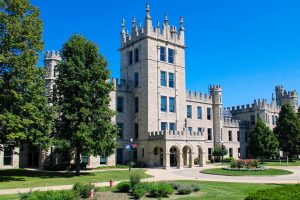Engineering Redesigned
November 16, 2005
A large, red structure attached to the Engineering Building has left passersby intrigued and mystified.
The $4.3 million addition, which began construction May 20, has been much needed since the building’s opening in 1995, said Alan Genis, director of microelectronics research and development laboratories of the department of electrical engineering.
“When we built the building in 1995 … the [original] architects did not fully take care of our needs,” Genis said.
Built as a Class B business-type fire-code building, the Engineering Building is not allowed to process certain hazardous materials and run certain electrical engineering equipment, Genis said.
The addition will be an independent building blocked off from the rest of the Engineering Building with a three-hour fire wall. This allows the College of Engineering and Engineering Technology to bypass the regulations regarding hazardous-material processing in a Class B building.
A previous plan to sidestep the regulations regarding a Class B building involved splitting the entire Engineering Building with a three-hour fire wall, which would have cost $6 million, Genis said.
The building houses nanotechnology and electrical engineering workshops, or clean rooms, which will be duplicated by the new addition. These workshops are housed within a sensitive atmospheric environment, with ultraviolet light-blocking windows and virtually particle-free air. The new addition will be a Class 100 particle-free clean room, necessary for the finely-tuned processes that take place in the building. By comparison, a hospital operating room is Class 50,000, Genis said.
About 12 students per section are allowed to register for a class that makes use of the workshops, Genis said. With the new addition, about 20 eligible students will be able to sign up for classes.
Compressed air, nitrogen, argon gas, a process vacuum and temperature controls are used to achieve such immaculately clean air in these workrooms, along with about 396 HEPA filters at about $600 each, Genis said. Part of the $4.3 million provided by the state will be used to integrate the previously existing air processors with the new workshop of the expansion.
“There’s a lot of work going on inside that you can’t see from the outside,” Genis said.
Previously-existing gas rooms, furnaces and toxic and hazardous materials will be able to be used by the electrical engineering department thanks to the new addition.
“In the 10 years of this building’s operation, we have never turned on the furnaces,” Genis said.
The building is projected to be completed May 15.
Rob Lass, a senior electrical engineering major, said the addition is necessary. He sometimes is bothered by the smell of exhaust that comes from the construction equipment because it makes him light-headed.
None of the $4.3 million required to construct the addition comes from student fees, Genis said.






